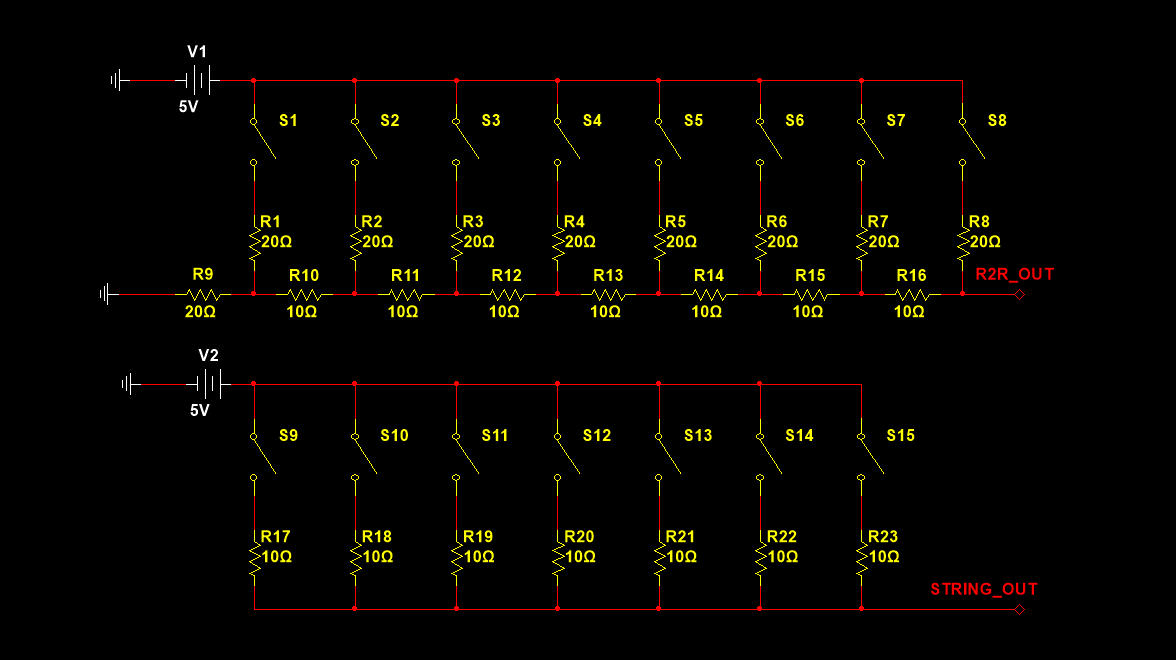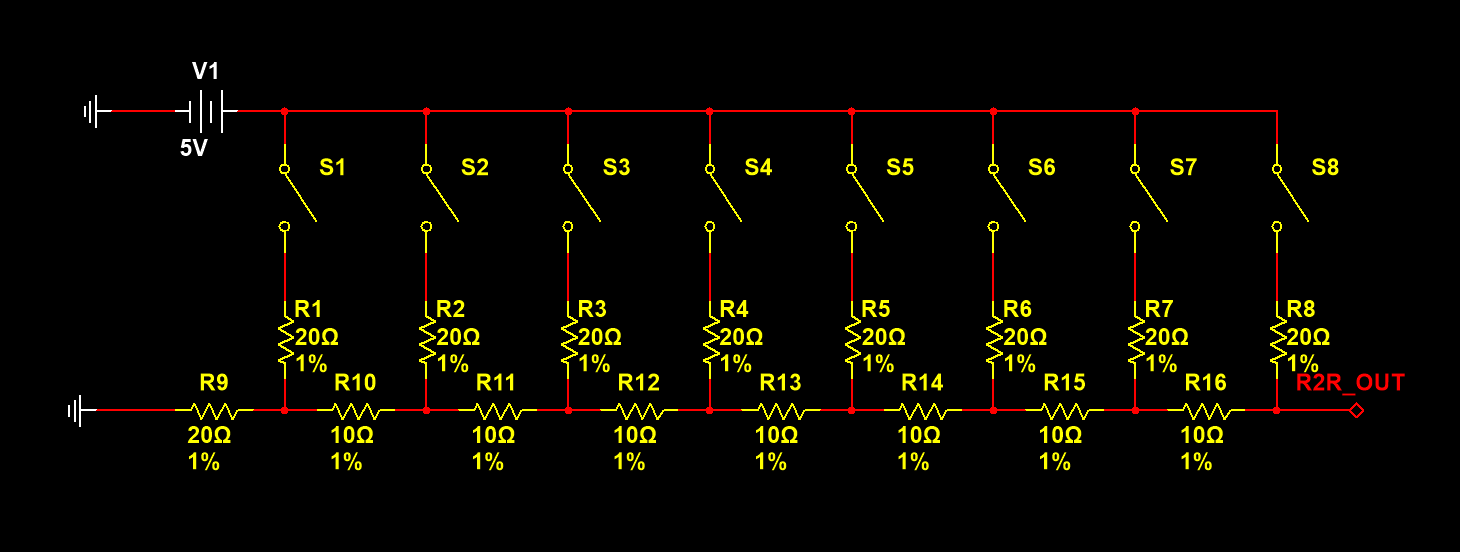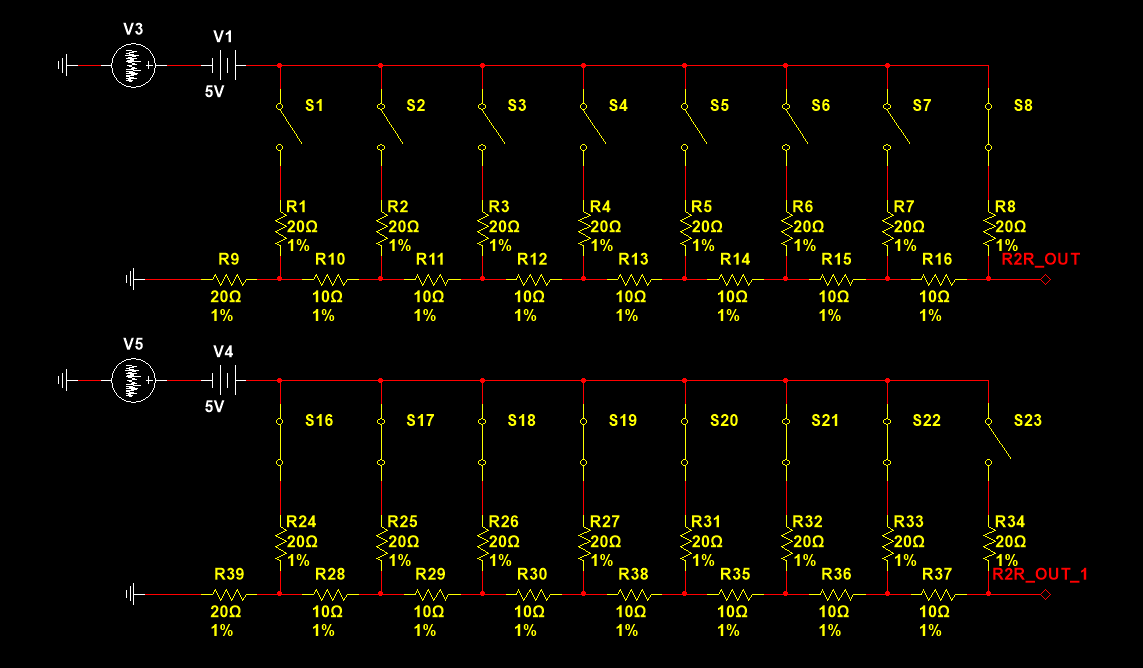HIBIKI SDS INTRODUCTION
HIBIKI SDS INTRODUCTION
The Story Of SOSOLAR and HIBIKI
Once mentioned the identity of SOSOLAR, you may recall the incident of MASSDROP X AIRIST AUDIO R-2RDAC plagiarizing HIBIKI BDS DAC a few years ago.
SOSOLAR(SOSO), who once worked at ARM, was struggling to find a DAC with a suitable sound and satisfactory price while studying in UK, so he came up with the idea of making a DAC by himself.
There are a lot of choices for DAC in front of us. Is it discrete or integrated chip?
SOSO himself is a very cautious person, and does not want the integrated chip to have bugs, let alone the so-called hidden menu of the integrated chip, such as the configuration of additional registers, will cause an operating mode that does not exist in the specification.
In addition, SOSO also does not like the integrated chip in the operation mode of the opaque part, such as some chips before the modulation, often do SRC operation, in fact, we do not know what is done inside, such as the algorithm used, working frequency, efficiency, configurable degree, etc. SOSO has no way to trust them without transparency of information.
Someone must say that so many people are adopting integrated chips, SOSO no need to do it. of course, this is not necessary, but from another angle, the integrated chip innovating the old and bringing forth the new every year, SOSO is really necessary to catch up with the trend? Is there a way to do it only once, and then use the same architecture for a long time, to tap into the potential of that architecture?
The answer, of course, is YES, that is to adopt a discrete design. Once the decoding architecture is set, what needs to be done in the future is the algorithm and tuning level. There is no need to look at the faces of the integrated chip manufacturers and worry about whether they will sell me or not. Also no need to worry about when they will be out of stock and other issues.
Since the general direction is set, the next problem is to choose the specific decoding architecture.
SOSO has personally investigated the mainstream architectures on the market, such as the hardware architectures of stringdac and R2R, as well as the algorithm architectures of PCM and SDM.
In 2015, SOSO confirmed the technology ROADMAP: first, start from R2R with low algorithm requirements but high hardware requirements, and then do string DAC with high algorithm requirements but low hardware requirements.

Why do you say that R2R has high hardware requirements?
First of all, R2R has very high requirements for resistance accuracy. The resistor itself has accuracy errors. The accuracy error of the resistors used in normal industry is about 1%, but this inevitably leads to voltage errors. For example, we hope to get a voltage of 0.5v, but due to the error of the resistance, we can only get a voltage of 0.51v, so for the ears, the sound is inaccurate. The most frightening thing is that this error is not monotonically increasing or decreasing, which means that the error may be different because of the different binary values. The more conventional method on the market is to fine-tune the resistors, such as PCM1704. The advantage is that the accuracy can be made very high, but the disadvantage is that it is very expensive. Regardless of the number of resistors, it seems that there are not many, but it is very difficult to fine-tune the error to 0.01%. ; In addition, there is also a software calibration method. The advantage is that the whole process is controllable and the accuracy is very high. The disadvantage is that the hardware needs to add one more calibration method. The DAC is used for addition or subtraction, and the output accuracy is improved, but it is no longer the source code of the music itself. Different people have different opinions on the pros and cons. SOSO has concluded through a lot of experiments that without using software calibration, the higher the resistance accuracy, the more delicate the sense of hearing; when the calibration is used, the accuracy is indeed, the static performance is indeed improved, and the sense of hearing is the same as the one used. The algorithm has a relatively large relationship.

The R2R has very high requirements on the power supply. After experiencing the baptism of resistance error, the thing that needs to be considered is power supply. As shown in the figure, in fact, R2R has almost no resistance to the power supply, which means that the noise of the power supply will directly reflect on the output.
At this time, there is a very high demand for the noise of the power supply.

Furthermore, R2R is very sensitive to glitch. Glitch is essentially the inaccurate timing of the data value flip. The greater the number of 0/1 inversions of the value, the greater the glitch value. The figure shows that when 01111111 is switched to the 10000000 state, although only one value is changed in the unsigned binary value, all the switches on the circuit are reversed. At this time, the switching timing of each switch is not completely synchronized, which means that there will be unstable states such as 10111111 during the intermediate switching time, but our r2r output terminal ignores the metastable state, so the output terminal will There is a very big spike signal, we call it glitch. The bad news is that this phenomenon cannot be eliminated, it can only be reduced. In this field, SOSO has studied for a very long time, and developed the first generation deglitch technology at the end of 2015 and used it for the first generation r2r module. The second-generation deglitch technology will use statistical probability to achieve algorithmic suppression. This algorithm can effectively suppress most of the glitch energy statistically. In addition, a special deglitch circuit is required, even if it does not pass an additional sample/hold circuit, it also can achieve quite good results.

At last, R2R has very strict requirements for analog filtering. Essentially, R2R is a nyquistDAC, which means that the output bandwidth is 1/2 of the sampling frequency. In theory, we need an analog filter with a cut-off frequency of 1/2 to filter out high-frequency images to get a smooth waveform. But in fact, our nyquist operating frequency is 44.1/48/88.2/96 to the infinitely high allowed by the hardware, so the question is how do we control the variable bandwidth of our analog filter? Moreover, before this question, it is actually very difficult for us to design an analog filter with a complete 1/2 sharp cutoff, which involves several issues: gain, bandwidth, phase, and noise. The first two are actually very easy to understand. The bandwidth can be directly simulated by software simulation, but the phase is not so simple. Generally speaking, if you want the steeper the 1/2 out-of-band attenuation (brickwall low pass filter), the higher the order of the analog filter, the higher the gain, and the higher the noise. According to the designer’s design philosophy, this Part of the analog design will be the part that affects the sound the most in the entire DAC system. Another core issue is the phase. Generally speaking, we all hope that the analog phase is as linear as possible. After years of research in SOSO, we have found that in fact, introducing a little phase delay in different frequency bands will give a very interesting sense of hearing. Although the use of phase does not affect indicators such as thd, it does bring some modification to the sound. Bandwidth is a very interesting technical point. It is generally believed that only needs to be configured to 1/2 bandwidth to be all right, but in fact it is not always the case. A higher bandwidth can bring a more delicate sense of hearing, but at the same time it will make the sound dry, a lower bandwidth can bring a more pleasant heaviness, but the amount of high and low frequency information will become less.
Usually low-pass filters can be matched into several common characteristics according to the Q value, such as Chebyshev, Bessel, Butterworth, etc. The sound of each filter feature is also very different. For example, Chebyshev's sound is more aggressive and richer in overtones, Bessel is more rational, and Butterworth is more lazy. SOSO uses Bezier characteristic curve when designing BDS, because SOSO believes that Bezier's waveform is closer to ideal, and the sense of hearing can also confirm this view.
R2R has very high requirements on algorithms. Fortunately, SOSO itself has a background in algorithms, and is naturally familiar with SRC algorithms.
The R2R alone is far from enough to achieve SOSO's pursuit, and the other most important area that must be overcome is the clock. It is generally considered that the clock is not sensitive to r2r. In fact, the context of this sentence is that R2R is not sensitive to the clock compared to the sdm architecture. Essentially all DACs are very sensitive to the clock, but the frequency of R2R is low, and the clock is often easier to do well, but the frequency of sdm is very high, which has high requirements on the power supply, wiring, and performance of the clock.
There are several hardware implementations of audio clock source, synchronous clock source and asynchronous clock source.
At present, asynchronous clock sources are common on the market. The advantage is that they are very convenient to use. You only need to simply switch the corresponding crystal oscillator according to the frequency. In addition, it is very easy to buy high-precision and low-noise oscillators on the market, and the sound is very easy to make, so many manufacturers are very happy to use them. But on the other hand, once an asynchronous clock source such as an oscillator is set, the system loses its scalability.
Compared with the convenient use of asynchronous clocks, SOSO is more concerned about scalability, because SOSO believes that no matter how low noise or good oscillators are, there will be better products. At this time, the asynchronous clock system is very closed in terms of architecture. Ways to use a better clock to support the system, this is not what SOSO wants to see. So, SOSO is determined to synchronize clocks.
There are many problems with synchronous clock sources that need to be solved: phase-locked loop, power supply, crystal oscillator
Phase-locked loop circuits can rely on integrated chips, but SOSO still doesn't trust them. One is that the performance is not good enough, and the other is that the chip may fail.
SOSO started in 2017 and developed phase-locked loop technology from scratch. The essence of the phase-locked loop is to calibrate the feedback source by generating an error voltage through an appropriate reference source and the time base error of the feedback source. There will be many sources of noise and error in this process.
First, the frequency divider will have a phase error, which is mainly manifested here as the phase noise degradation of the intermediate frequency.
。。。
The phase detector itself will have gain errors. For example, the time base errors of the reference source and the feedback source are not linearly reflected in the output of the charge pump.
。。。
The analog low-pass filter itself will generate a lot of noise, you must carefully choose the parts and the appropriate analog bandwidth, because the noise here is directly picked up by the voltage-controlled oscillation unit, and too high output noise will also lead to too high phase noise .
。。。
The more SOSO researches, the more it discovers that the core problem of this system is not limited to the circuit itself, but also the oscillator. The oscillator used in the phase-locked loop is a special oscillator called a voltage-controlled oscillator. Normally, the voltage-controlled oscillator has several key indicators, the range of the control voltage and the phase noise. Generally speaking, the control voltage range is inversely proportional to the phase noise. The narrower the control range, the better the phase noise.
SOSO researched the common and easy-to-buy voltage-controlled oscillators on the market. The supply is a very serious problem. In order to release the coupling with the supplier, SOSO plans to make its own oscillators.
There are several types of oscillators, but crystal oscillators and inductance oscillators have better performance at audio frequencies.
The advantages of crystal oscillators are extremely low phase noise and relatively stable frequency oscillation range.
。。。
The advantage of the inductance oscillator lies in the extremely wide oscillation frequency range and extremely fast response speed.
。。。
When the decoding hardware and software architecture and clock architecture are ready, the next thing to consider is power supply.
Power supply is a very interesting topic. It is generally believed that the power supply must be very, very quiet, and the transient current capability is often ignored.
After studying all possible circuit architectures, SOSO adopts power supply circuits with different circuit requirements according to different application scenarios.
Use a large current and large dropout voltage regulator circuit in the main road, and use the lowest noise low dropout voltage regulator circuit in the finest decoding circuit.
。。。
After all the software, hardware and layout are determined, it returns to the origin of HIBIKI, which is sound.
Although SOSO comes from an engineering background, he does not dislike the process of ‘tuning’. SOSO has always believed that the so-called tuning is actually an understanding of sound.
In theory, it is impossible for us to directly change the frequency of the violin, but we can adjust the harmonic frequency of the violin to a distribution that better expresses the tone of the violin; another example is that we cannot change the frequency of the piano, but we can make the speed of the piano Slow down a little bit to soften the turbulent piano. This requires SOSO to have a certain understanding of the timbre of musical instruments and music.
In order to achieve the ideal timbre and music, SOSO not only adjusts the circuit architecture itself, but also focuses on the collocation of the entire parts.
Audio is a system engineering. In order to achieve suitable results, we must do some basic research: collect all the easy-to-purchase and reliable parts on the market, such as capacitor resistors and transistors.
In the field of energy storage capacitors, SOSO contains nearly 80 different models, each of which has its own tone and taste, although there is no difference in use.
In the field of pond capacitors, which is the most critical and most influential to timbre, SOSO also contains more than 20 different types of capacitors with different specifications. There are indeed advantages and disadvantages between them in the actual test value of the LCR bridge, but after SOSO After listening carefully, I think these values are not significantly reflected in the sound. Capacitors with very good indicators are not the best in terms of hearing. Conversely, capacitors with poor indicators are not the worst in terms of sound performance. A very interesting phenomenon is that the capacitors with partial scores will be more distinctive in sound. For example, capacitors with particularly small internal resistance will have a faster sounding speed, but the graininess is very strong.
The triode is also a very interesting field. SOSO also included more than one hundred triodes back for detailed testing and pairing listening. The conclusion is that it is similar to the capacitance but the indicators are not very intuitively reflected in the sound. On the contrary, most expensive parts sound better than cheaper parts. This experiment is a listening test from friends around you, who don't know the price and indicators of the parts in advance.
。。。
SOSO very much admits that modern audio test indicators cannot reflect some abstract phenomena. For example, there are indeed some devices with particularly low distortion that sound not as good as those with average indicators. There are also expensive devices such as equipment with more than 100,000 indicators. The indicators are often secondary. , Musical hiend sex is the main thing.
The same is true in HIBIKI. SOSO agrees that basic indicators are the basis of an audio product, but at the same time, it also admits that these basic indicators are not the necessary conditions for the sound of the equipment. In addition to research and development, SOSO has also done a lot of tests on expensive famous machines. Expensive machines do have their own uniqueness in some indicators, but some indicators are scary, but the only constant is that they are very good. It sounds good, the sound is very strong, and it is not tired to listen for a long time.
When HIBIKI is debugging, it also follows a similar principle, with good sound and good listening first, and indicators second.
How to evaluate whether the equipment is good or not, does not need to ask for the opinions of the equipment, but your own heart.